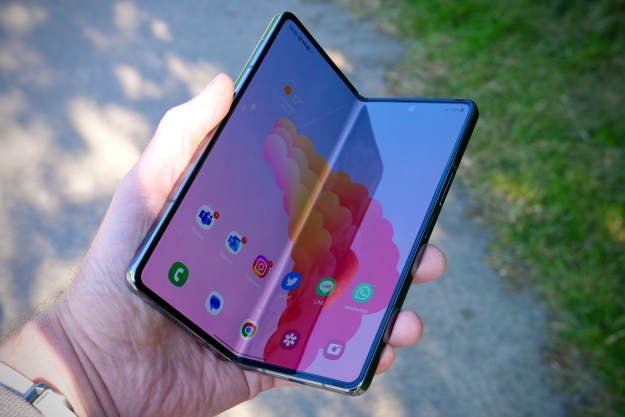
This article is part of The Food Fight, a series that explores how the United Nations’ World Food Programme is using technology to battle food scarcity and put an end to hunger by 2030.
Lebanon has a population of 5.8 million people. An astonishing 25% of them are refugees and 49% of them are worried about something most of us take for granted — access to food.
As if fleeing war, persecution, or poverty in your own country wasn’t bad enough, imagine trying to find food for your family in an unfamiliar place and with limited funds. That’s the plight facing countless refugees around the world today.

The World Food Programme (WFP), the food-assistance branch of the United Nations, is working toward the laudable goals of food security, improved nutrition, and an end to hunger for the estimated one in nine people worldwide who don’t have enough to eat. The WFP does this not just by providing food or the means to acquire it, but also by leveraging technology in clever ways.
A good example is the Dalili smartphone application for Android. Dalili means “my guide” in Arabic, and this handy app is helping to ensure that Syrian refugees and other vulnerable families in Lebanon are getting the food they need at a reasonable price.
How Dalili works
One of the issues that exacerbates the struggle to find meals is that refugees often end up in remote neighborhoods that aren’t well-served by public transport and have limited services and stores. The stores that are there often don’t stock familiar foods and may not offer the fairest prices.
The WFP already provides cash assistance using an e-card system, whereby vulnerable families who can’t afford to eat properly are given prepaid credit cards with $27 per person to be spent on food each month. The organization also works directly with local shops, particularly in neighborhoods with large refugee populations, to ensure that prices are within a fair range.
With the Dalili app, hungry families can compare prices at different stores, see what’s available in each store, and get all the information they need about the store hours, location, and even the shop owner. The app displays pictures of different foodstuffs with current prices and also photos of the storefronts that stock them to make finding the right stores easier.
App users can upload requests for particular goods, or provide feedback for stores. This helps shop owners understand what their customers actually want.
“The Dalili app is tried and tested, refugees are using it, and it’s helping them,” WFP Communications Officer Katharina Weltecke told Digital Trends.
A human approach
Part of the reason that it’s working so well is because of the way it was developed – with a human-centric approach. The Dalili project was born of a need to ensure that families get the most out of their available resources, but the developers were careful to dig into the problem and consult vulnerable families to create something truly useful.
“It’s so important to test your assumptions and see if it’s something that the user really needs,” said Weltecke. “So, feedback from the refugees was built into the project cycle for Dalili.”

The really clever part of Dalili is the interaction it fosters: App users can upload requests for particular goods, or feedback for stores. This helps shop owners understand what their customers actually want. The store owners are also invited to contribute with the option to add information on stock levels and to advertise special promotions that may encourage more customers through their doors.
The struggle of negotiating stores and variable food prices with minimal budgets isn’t unique to Lebanon, so the next challenge is to scale Dalili up and expand it.
“The WFP has always been a tremendously innovative organization,” says Weltecke. “As a humanitarian agency, working in more than 80 countries, every day our workers in the field are faced with challenges they need to overcome in creative ways.”
The Innovation Accelerator
Around five years ago the WFP established an innovation accelerator in Munich, Germany. It’s there to assist the more than 16,000 WFP staffers around the world, but also shares innovation expertise with the wider United Nations network, developing countries, and even with external startups focused on food security and hunger issues.
“It’s about creating a safe space for colleagues, because we know innovation is all about taking risks and piloting new ideas,” says Weltecke.

With the innovation accelerator, WFP workers in the field who identify a need and have a good idea to address it can get the support they need to develop their idea. The WFP also runs an annual challenge where it calls on its staff worldwide to share their latest ideas. The innovation accelerator can help them create a prototype and test these ideas to find out how well they work.
This initiative is all about taking a pragmatic approach, not reinventing the wheel, so where there’s an existing technology solution, the WFP will adopt it. There was nothing quite like Dalili out there, so the WFP contracted developers to make it, but with regular feedback from focus groups and the refugees who would use it.
Building on success
With around 12,000 monthly users and 500 Lebanese stores signed up, Dalili is clearly meeting a need for families and for shop owners, and it’s ensuring the WFP delivers maximum benefit from the aid it’s providing. The struggle of negotiating stores and variable food prices with minimal budgets isn’t unique to Lebanon, so the next challenge is to scale Dalili up and expand it to other countries, a process that has already started with Jordan and Kenya.
The app is also expanding with new stores and items. Another new feature that users have been requesting for Dalili is transportation assistance, so the WFP is currently looking at how it might add bus route information and navigational directions for areas where Google Maps has not yet ventured or simply isn’t very accurate.
Eventually, localized versions of the Dalili app may be available in multiple countries across the globe, helping people get the best value on food, and bringing the challenging task of ending world hunger a step closer.
Editors' Recommendations
- Google is launching a powerful new AI app for your Android phone
- Thanks to iris scanning, refugees can get the food they need at a glance
- Fighting world hunger with a trivia game? It’s not as crazy as it sounds



